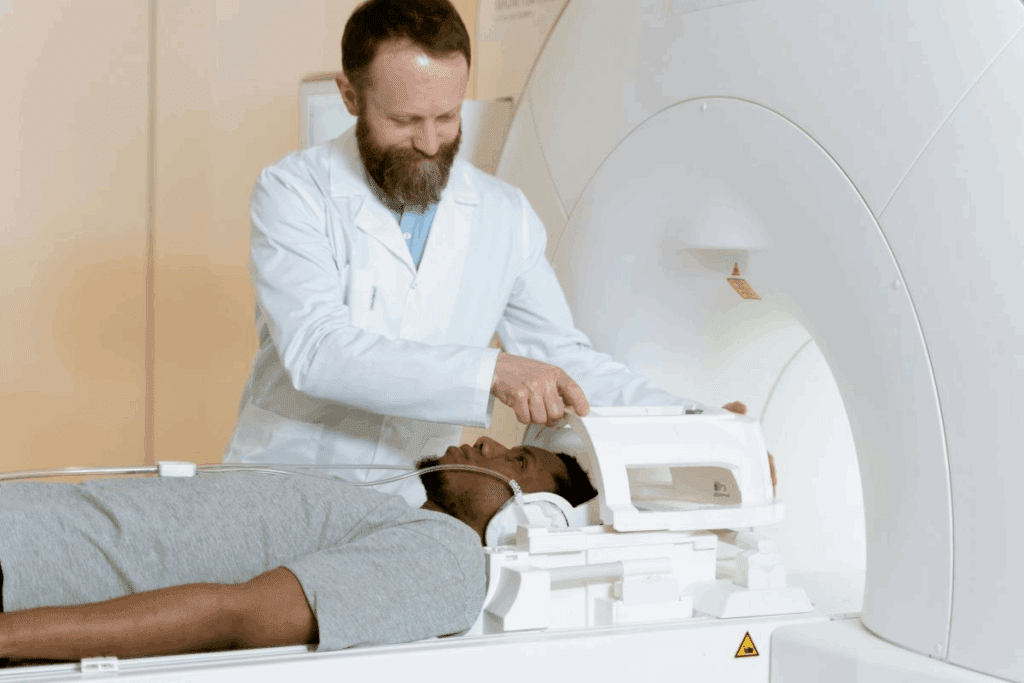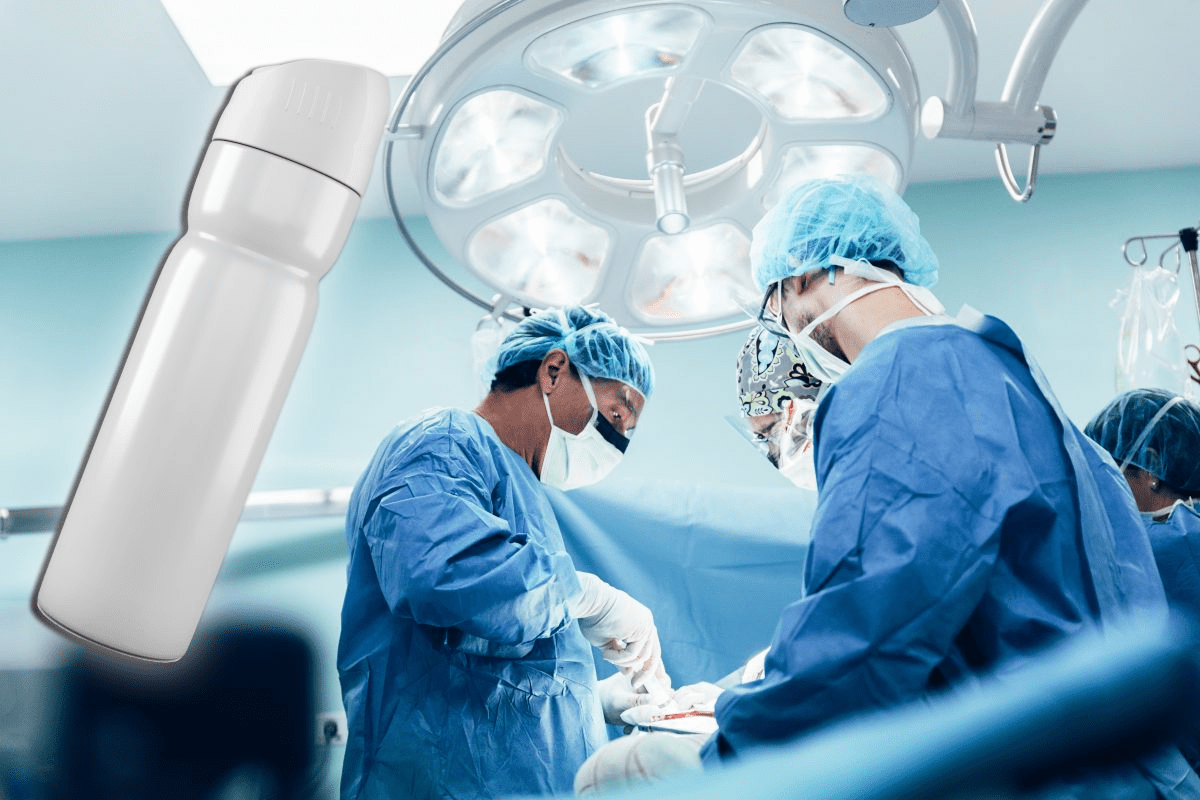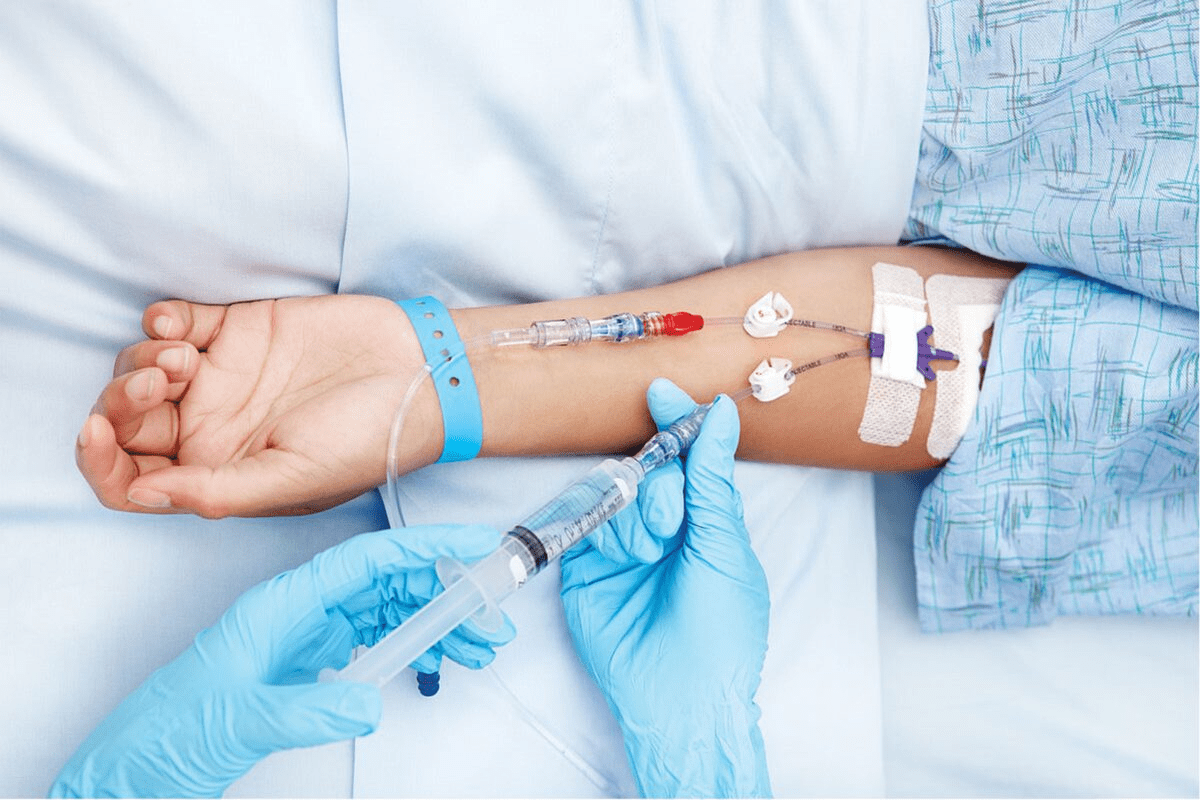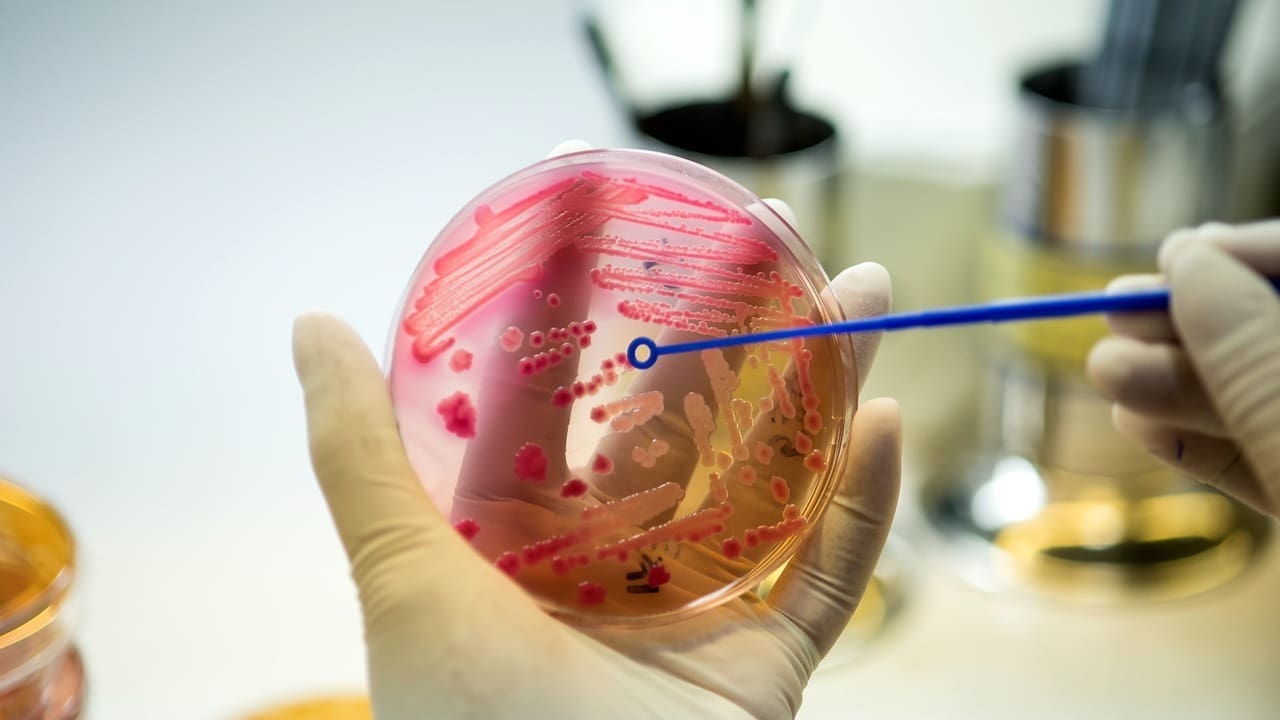Last Updated on November 27, 2025 by Bilal Hasdemir

Before a FDG PET scan, patients must stay warm. This step is key for the scan’s success. A PET scan helps doctors find health issues like cancer and brain problems.
Being warm is important for an FDG PET scan because it changes how the body uses the tracer. When you’re cold, your body tries to stay warm, affecting the tracer’s spread. This can make the scan results less accurate.
Key Takeaways
- Staying warm before a PET scan can improve its accuracy.
- The preparation process is critical for reliable results.
- Following pre-scan instructions, including staying warm, is vital for patient care.
- A PET scan is a valuable tool for diagnosing many health issues.
- Proper preparation ensures the scan’s effectiveness.
What Is a PET Scan and How Does It Work?

Positron Emission Tomography, or PET, is a cutting-edge medical imaging method. It has changed how we diagnose diseases. It shows how the body’s cells work, helping doctors find and track health issues.
A PET scan uses a special tracer that lights up when it finds active cells. This tracer goes to areas where cells are growing fast, like in cancer. The scanner picks up these signals, making detailed pictures of what’s happening inside us.
Basic Principles of Positron Emission Tomography
PET scans use a tracer that sends out positrons. When these positrons meet electrons, they create gamma rays. The PET scanner catches these rays, making detailed images of our body’s inner workings.
Differences Between PET and Other Imaging Techniques
PET scans are different from CT scans or MRI because they show how cells work, not just their shape. This makes them great for spotting and tracking diseases like cancer and heart problems. When paired with CT scans (PET-CT), they give even more detailed views, helping doctors make better diagnoses.
In short, PET scans are a key tool in medicine. They give us a unique look at how our body’s cells function, setting them apart from other imaging methods.
The Role of FDG in PET Scan Imaging

Understanding FDG in PET scan imaging is key to seeing how it helps find and manage cancer. FDG, or fluorodeoxyglucose, is a glucose molecule with fluorine-18, a radioactive tracer added.
What is Fluorodeoxyglucose (FDG)?
Fluorodeoxyglucose (FDG) is a glucose analog that cells take up like glucose. The fluorine-18 lets us see where FDG goes in the body with PET scans. This is because fluorine-18 emits positrons, which the PET scanner detects.
How FDG Mimics Glucose in the Body
FDG gets into cells the same way glucose does. Inside, it gets phosphorylated by hexokinase, a glucose metabolism enzyme. But unlike glucose, FDG can’t be broken down further. So, it stays trapped in cells, showing up in tissues that take up a lot of glucose, like cancer cells.
Why Cancer Cells Absorb More FDG
Cancer cells grow fast and use a lot of glucose. So, they take up more FDG than normal cells. This makes FDG PET scans great for finding cancer. They help doctors see how far cancer has spread and if treatments are working.
The role of FDG in PET scans is critical for cancer diagnosis and treatment. It shows where cells are most active, helping doctors make better treatment plans and improve patient care.
The Science Behind Temperature and FDG PET Scans
Temperature is key in how well FDG PET scans work. It affects both the scan process and what the results mean. The scans are more sensitive to temperature changes because of brown adipose tissue (BAT) in our bodies.
Brown Adipose Tissue: The Temperature-Sensitive Tissue
Brown adipose tissue is a special fat that helps our body make heat. BAT is very sensitive to cold. When it gets cold, BAT’s activity can change how FDG PET scans show results.
How Cold Activates Brown Fat Metabolism
When it’s cold, our body uses BAT to make more heat. This makes BAT take up more glucose, which means more FDG in scans. So, cold can change where FDG shows up, which might make scan results seem wrong.
“Cold can make brown fat active, leading to false positives in FDG PET scans,” studies say. This is because BAT’s glucose uptake might look like cancer.
The Impact on Scan Interpretation
Temperature affects how we read FDG PET scans. If we don’t control for it, BAT’s activity can make scans look wrong. So, keeping the room warm before and during the scan is important for accurate results.
Knowing about brown adipose tissue and how temperature affects scans helps doctors. They can prepare patients better and make scan results more reliable.
Why Staying Warm Is Critical for Accurate Results
Staying warm is not just about feeling cozy; it’s key for getting accurate FDG PET scan results. Being cold can make your body do things that mess with the scan’s clear images.
Preventing False Positive Readings
Keeping warm is important because it stops false positive readings. When you’re cold, your body uses more glucose in places like brown adipose tissue. This can look like abnormal activity on the PET scan, leading to wrong diagnoses.
Optimizing Tracer Distribution
Staying warm also makes the FDG tracer spread out better in your body. When you’re warm, the tracer spreads evenly, giving clearer images. This is key for spotting abnormal activity accurately.
Enhancing Diagnostic Accuracy
Keeping your body warm boosts the PET scan’s accuracy. The scan can better spot abnormal glucose use without cold’s interference. This helps your healthcare team make better decisions for your care.
In short, staying warm before an FDG PET scan is a simple way to get the best results. By controlling your body temperature, you help make your scan more effective.
Temperature Protocols for FDG PET Scan Preparation
The accuracy of FDG PET scans depends a lot on the right temperature. To get the best results, certain temperature rules must be followed during preparation.
Recommended Room Temperatures
Keeping the room warm is key to avoid brown fat activation. Studies suggest keeping the room between 72°F to 78°F (22°C to 25°C). This helps patients stay warm and comfortable.
This temperature range also reduces FDG uptake in brown fat. This makes the scan images better.
Patient Warming Techniques
There are ways to keep patients warm aside from room temperature. Using warm blankets, warm drinks, and dressing warmly are some methods. Some places use special warming devices too.
It’s important to start warming the patient 30 minutes before the scan. This ensures they are warm enough.
By following these temperature rules and warming techniques, doctors can improve FDG PET scan accuracy. This leads to better diagnosis and treatment plans.
Complete Preparation Guide: 48 Hours Before Your FDG PET Scan
Counting down the 48 hours before your FDG PET scan? It’s important to follow a specific guide for accurate results. Proper preparation is key to getting high-quality images. These images help your healthcare team make informed decisions about your care.
Dietary Restrictions and Guidelines
Before your FDG PET scan, it’s vital to follow a specific diet. Avoid high-sugar foods and drinks as they can affect the FDG tracer uptake. Opt for a low-carb, high-fat diet to enhance tracer distribution. Always check with your healthcare provider for specific dietary instructions tailored to your needs.
A medical expert notes, “A well-planned diet before a PET scan can significantly impact the quality of the images obtained.”
“Dietary preparation is critical for PET scan accuracy. Patients should be advised on how to prepare to avoid false results.”
Physical Activity Limitations
Reducing physical activity is also key in preparing for your FDG PET scan. Strenuous exercise can increase FDG uptake in muscles, leading to inaccurate results. Try to minimize vigorous activities 24 to 48 hours before your scan. Instead, choose light, relaxing activities that don’t strain your muscles too much.
Medications to Avoid
Certain medications can impact your FDG PET scan results. Inform your healthcare provider about all medications you’re taking. Some may need to be adjusted or stopped before the scan. Always consult with your healthcare provider before making any changes to your medication regimen.
By following these guidelines on dietary restrictions, physical activity, and medications, you can help ensure your FDG PET scan provides accurate information. This information is vital for your diagnosis and treatment plan.
The Day Before Your PET Scan: Step-by-Step Preparation
The day before your PET scan is key for getting ready. Doing the right steps can make your scan results more accurate. You need to focus on diet, staying hydrated, and managing your body temperature.
Low-Carbohydrate Diet Requirements
Following a low-carbohydrate diet is essential. This diet helps the FDG tracer spread evenly in your body. Eating too many carbs can raise glucose levels, which might mess with the tracer’s uptake. Start cutting down on carbs the day before your scan.
Hydration Guidelines
Drinking enough water is also important. Water helps clear the tracer from your body after the scan, lowering radiation risks. Aim for 8-10 glasses of water the day before and on the scan day. But, always check with your healthcare provider for their hydration advice.
Temperature Management Strategies
Keeping your body temperature stable is also key. Staying warm reduces brown adipose tissue activity, which can skew scan results. Stay away from cold and wear warm clothes or use heating pads as your healthcare team suggests.
By following these steps, you can make sure your PET scan is accurate and reliable. If you have any questions or worries, talk to your healthcare provider for tailored advice.
What to Expect During Your FDG PET Scan Procedure
Knowing what to expect during your FDG PET scan can make it less scary and easier to handle. The process includes several important steps, from when you arrive to the actual scan.
Arrival and Check-in Process
When you arrive, you’ll check in at the reception area. It’s important to be on time to avoid delays. You’ll need to show your ID and any medical records you have. Then, a staff member will take you to the preparation area.
FDG Injection and Uptake Period
In the preparation area, a healthcare professional will give you an Fluorodeoxyglucose (FDG) injection. This tracer is key for the PET scan to see how your body’s cells are working. After the injection, you’ll wait about 60 minutes for the FDG to spread through your body’s tissues.
During this uptake period, it’s important to stay calm and not move. This helps the tracer spread evenly.
The Scanning Process
Once the uptake period is over, you’ll go to the PET scanner room. The scan takes about 30 to 60 minutes. You’ll lie on a table that slides into the scanner. It’s important to stay very quiet and not move during the scan.
The scanner will show where the FDG is in your body. This gives detailed pictures of how your body’s cells are working.
Some important things to remember during the scan:
- Listen carefully to the instructions from the healthcare staff.
- Try to stay as quiet and calm as possible.
- Breathe normally unless you’re told to do something different.
By knowing these steps, you can get ready for the FDG PET scan better. This makes the whole experience easier and less stressful.
Other Factors That Can Affect PET Scan Accuracy
PET scan accuracy is influenced by many factors, not just temperature control. Physiological and external elements also play a role. To ensure reliable PET scan results, managing these factors is key.
Blood Glucose Level Management
Managing blood glucose levels is vital before a PET scan, more so for diabetic patients. High blood glucose levels can skew the FDG tracer’s distribution. This might lead to inaccurate scan results. Patients are usually told to fast or follow a specific diet before the scan to keep their blood glucose levels in check.
Recent Surgeries or Procedures
Recent surgeries or medical procedures can also impact PET scan accuracy. Inflammation or healing processes in the body can cause increased FDG uptake. This might be misread as abnormal activity. It’s important for patients to tell their healthcare providers about any recent medical interventions.
Muscle Activity and Its Effects
Muscle activity can also affect PET scan results. Strenuous exercise or muscle tension before the scan can increase glucose uptake in muscles. This might impact the scan’s accuracy. Patients are usually advised to avoid vigorous physical activity before undergoing a PET scan.
Special Considerations for Diabetic Patients
Diabetic patients need special care when getting ready for a FDG PET scan. Managing diabetes is key for the scan’s success. This is because diabetes affects blood sugar and how the FDG tracer works.
Blood Sugar Control Before the Scan
Keeping blood sugar levels right before a PET scan is very important. High blood sugar can mess up the FDG uptake. This might make the scan results not accurate. Diabetic patients should talk to their healthcare provider to manage their blood sugar before the scan.
- Monitor blood glucose levels regularly
- Adjust medication or insulin doses as directed by your healthcare provider
- Follow a diet plan that helps maintain stable blood sugar levels
Insulin Management Guidelines
Diabetic patients on insulin have special rules for the PET scan. It’s important to talk to your healthcare provider about your insulin plan. They can help figure out the best way to manage it.
Key considerations include:
- Adjusting insulin doses to avoid hypoglycemia during the fasting period before the scan
- Informing the PET scan facility about your insulin schedule and any changes
- Following any specific instructions provided by your healthcare team regarding insulin management on the day of the scan
Communication With Your Healthcare Team
Talking to your healthcare team is very important for diabetic patients getting a PET scan. Tell them about your diabetes plan, including your diet, medications, and insulin.
It’s also important to discuss any concerns or questions you have about preparing for the PET scan.
By managing blood sugar, following insulin guidelines, and talking to your healthcare team, you can make sure the PET scan goes well.
Common Questions About Temperature and PET Scan Preparation
When getting ready for a PET scan, many patients wonder about temperature management. Keeping the right temperature is key for accurate results. Knowing the best ways to manage it can ease worries.
Can I Use Personal Heating Devices?
Many patients ask if they can use personal heaters to stay warm before a PET scan. The answer is yes, but with some rules. Electric blankets or heating pads are okay to use on the day of the scan. But, always follow the exact instructions from your healthcare provider.
How Long Must I Maintain Warmth?
The time needed to stay warm before a PET scan varies. Usually, patients are told to stay warm for at least 30 minutes to an hour before the scan. But, this can change based on your situation and the imaging facility’s rules.
What If I’m Naturally Cold-Sensitive?
For those who feel cold easily, staying warm before a PET scan can be tough. Wearing layers and using warm clothes helps. Also, tell your healthcare provider about your cold sensitivity for extra advice.
By knowing the answers to these common questions, patients can prepare better for a PET scan. This ensures more accurate results and a better experience overall.
After Your PET Scan: What You Need to Know
After your FDG PET scan, it’s key to know what to do next. This helps ensure your results are accurate and safe. It’s a time to follow important steps for recovery.
Radiation Safety Precautions
Even though the PET scan uses a small amount of radioactive material, it’s wise to take precautions. Drink plenty of fluids to get rid of the tracer. Also, avoid close contact with pregnant women and children for the day.
The Nuclear Regulatory Commission says to drink lots of water. This helps get rid of the radioactive material. It’s a simple way to reduce exposure.
Post-Scan Activities and Restrictions
You can usually go back to your normal activities right after the scan. But, it’s best to avoid strenuous activities for the rest of the day. Always follow your doctor’s instructions about what to do next.
- Resume normal diet unless instructed by your doctor
- Keep drinking plenty of fluids
- Avoid close contact with pregnant women and children
When to Resume Normal Diet and Medications
You can usually resume your normal diet and medications unless your doctor says not to. If you have questions, always ask your healthcare provider.
“It’s essential to follow the specific instructions provided by your healthcare team regarding post-scan care and any necessary follow-up appointments.”
By following these steps, you can have a smooth recovery. And you’ll get the best results from your FDG PET scan.
Understanding Your PET Scan Results
Understanding your PET scan results is key to knowing what to do next. After a PET scan, your doctor will look at the images and data. They will give you insights into your health.
Interpreting Standardized Uptake Values (SUV)
The Standardized Uptake Value (SUV) is important in PET scan results. It shows how much a part of your body is taking in the tracer. A high SUV might mean high activity, which could be cancer.
Timeframe for Receiving Results
How long it takes to get your PET scan results varies. Usually, it’s a few days for analysis and a report. Your doctor will tell you when to expect your results.
Follow-up Procedures and Next Steps
When you get your results, your doctor will talk about them with you. They will tell you the next steps in your treatment. This could be more tests, starting treatment, or just watching your condition. It’s important to follow your doctor’s advice for the best care.
Getting and understanding your PET scan results is a big part of managing your health. By working with your healthcare team, you can make smart choices about your care.
Technological Advances in FDG PET Scan Imaging
FDG PET scanning is getting a big boost from new tech. This tech brings better detail and accuracy to disease diagnosis and treatment. It also makes scans more comfortable for patients and less affected by things like temperature.
New Scanner Technologies Reducing Temperature Sensitivity
New scanners are being made to fight off temperature’s impact on scans. Some have special temperature control systems. This keeps the patient’s environment steady during the scan.
“The integration of advanced detector materials and sophisticated cooling systems has significantly enhanced the overall performance of PET scanners.”
Software Improvements for Image Interpretation
Software updates are key for better PET scan image analysis. New algorithms and machine learning help with image quality and data accuracy. Experts say this makes diagnosing and tracking diseases more reliable.
Future Directions in PET Imaging
The future of PET imaging looks bright with new hybrid techniques. These combine PET with MRI or CT for better diagnostic info. Researchers believe this will give a deeper look into disease.
As tech keeps advancing, FDG PET scan imaging will get even better. This means better care for patients in the future.
Conclusion: The Importance of Following Temperature Guidelines for Successful PET Imaging
Getting ready for a PET scan is key to getting good results. Keeping warm before and during the scan is important. This helps make sure the images are clear and useful.
Following the right temperature guidelines and other steps can make a big difference. This means keeping the room warm and avoiding cold. Healthcare providers may also suggest using warming techniques.
For a PET scan to be successful, preparation is everything. This includes managing temperature, following a special diet, and more. By following these steps, patients help doctors get accurate information. This helps doctors make better decisions about their care.
It’s very important to follow temperature guidelines and other instructions for a good PET scan. Patients should talk to their healthcare team to make sure they’re ready for the scan.
FAQ
What is the ideal room temperature for PET scan preparation?
The ideal room temperature for PET scan prep is 68°F to 72°F (20°C to 22°C). This helps reduce brown adipose tissue activity.
Can I use personal heating devices before a PET scan?
Always check with your healthcare provider or the PET scan facility about using personal heating devices before your scan.
How long must I maintain warmth before a PET scan?
You should stay warm for at least 48 hours before the PET scan. This helps minimize brown adipose tissue activation.
What if I’m naturally cold-sensitive, can I I undergo a PET scan?
If you’re naturally cold-sensitive, tell your healthcare provider. They will guide you on managing your temperature before and during the scan.
How long after a PET scan am I radioactive?
How long you stay radioactive after a PET scan varies. It depends on the tracer used and your body’s metabolism, usually a few hours.
Can I shower before a PET scan?
Showering before a PET scan is usually okay. But avoid using lotions, creams, or deodorants that might interfere with the scan.
What should I do the night before a PET scan?
The night before, eat a low-carb diet, drink plenty of water, and keep warm. This prepares your body for the scan.
How long does it take to get PET scan results?
Getting PET scan results can take a few hours to several days. It depends on the facility and scan complexity.
What is the SUV value in a PET scan, and how is it interpreted?
The SUV measures tracer uptake in tissues. Higher values often mean increased metabolic activity, which can indicate conditions like cancer.
Can I drink water before a PET scan?
Yes, drinking water is recommended before a PET scan. But follow your healthcare provider’s specific hydration guidelines.
What are the dietary restrictions before a PET scan?
A low-carb diet is usually recommended before a PET scan. This helps optimize the FDG tracer uptake.
Are there any medications I should avoid before a PET scan?
Some medications may need to be avoided or adjusted before a PET scan. Always check with your healthcare provider for specific guidance.
How does blood glucose level affect PET scan results?
High blood glucose levels can affect FDG tracer uptake. This can lead to inaccurate results. Managing blood glucose before the scan is key.
What are the post-scan activities and restrictions after a PET scan?
After a PET scan, you can usually resume normal activities. You may be advised to drink plenty of water to flush out the tracer. Follow specific guidelines for radiation safety.
Reference
- Steinberg, J. D., et al. (2017). Factors influencing brown fat activation in FDG PET/CT. European Journal of Nuclear Medicine and Molecular Imaging (Review). https://www.ncbi.nlm.nih.gov/pmc/articles/PMC5594988/






